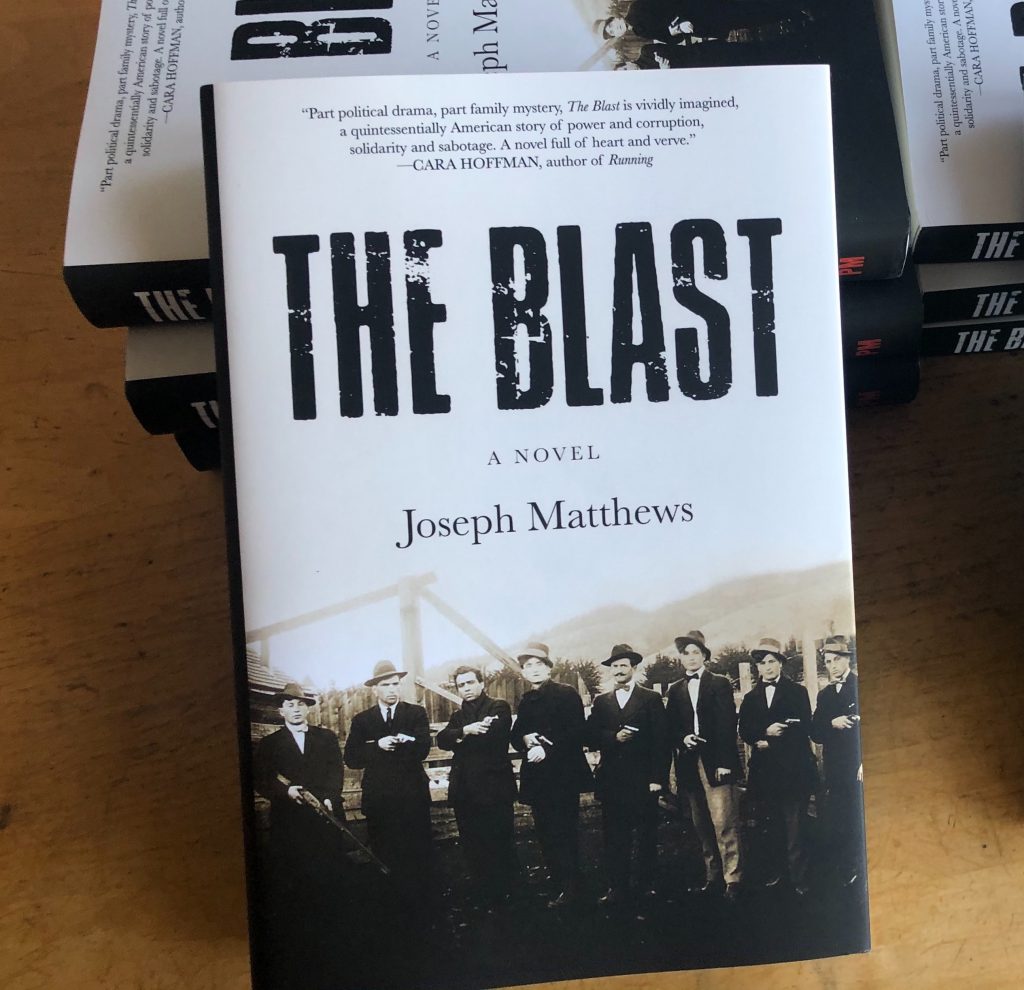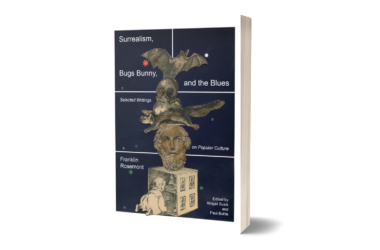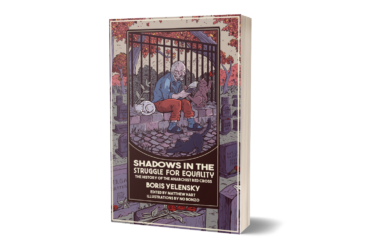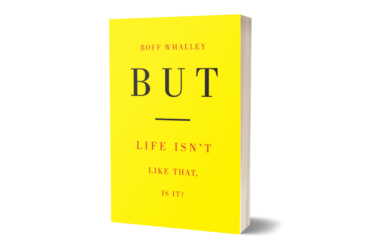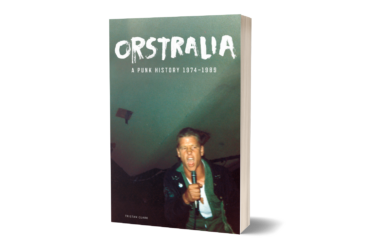Labor organizing and espionage in Joseph Matthews’s new novel, The Blast
It’s an old joke: Lock two anarchists in a room; come back in an hour and you’ll find either two dead bodies or a new newspaper. In Joseph Matthews’s new novel, The Blast (PM Press), the passionate activists and pamphleteers of 1916 San Francisco share the joke with no little irony: amidst worker strikes, state-sanctioned sabotage, and a looming war, the radical Left can’t stop arguing.
Over a Zoom call, Matthews chatted with Evangeline Riddiford Graham about San Francisco’s vibrant history of left-wing organizing and the importance of fiction in exploring the intersection of the political and the personal.
Evangeline Riddiford Graham [ERG]: The Blast is a vivid depiction of the diversity of the radical Left and labor activism in North Beach, San Francisco, in 1916—a scene that included Wobblies, anarchists, and trade unions. Can you talk a bit about the various groups portrayed in the novel, and how they interacted?
Joseph Matthews [JM]: Historically, the novel has mostly been a showplace of the domestic. But I believe it’s also a great form to explore, through its characters, the political questions of any particular moment and how they may resonate today. There was a great variety of tremendously active Left formations in San Francisco in 1916, and I wanted to explore that variety within the context of the novel.
A whole array of different types of anarchists were very active, many of them with Italian, Spanish, German, and other European roots and transplanting those anarchist formations to San Francisco. Some of them more homegrown than that. You had anarchists who favored propaganda of the deed—that is, assassinations, bombings, political violence directed towards specific targets; you had anti-organization anarchists, people who believed that any organization was bound to be stratified and hierarchical and resisted them all. There were also syndicalist anarchists who believed not in traditional trade unions but in organizing the working class around sites of labor.
Those anarcho-syndicalists flowed into the Wobblies—the IWW, the Industrial Workers of the World, who were outside of the trade union movement. The IWW was started in 1905 by a bunch of left-wing former socialists and trade unionists, many of them working in mines and lumber, but also with heavy urban presence. Big Bill Haywood, the songwriter Joe Hill, Lucy Parsons, Elizabeth Gurley Flynn: people who were for many decades household names.
All these factions were in action at the same time, in the same place, in a relatively small city, in relatively small neighborhoods, and while they all actively opposed capital, the state, and the church, they also disagreed over many, many questions. The anarchists who were against organization versus the Wobblies, who were very highly organized.
Then you had traditional trade unions, who were very strong in San Francisco but quite conservative. They were exclusionary; they were racist. There were almost no Black or Chinese American workers admitted to the regular traditional mainstream trade unions. And certain kinds of laborers were simply excluded because they didn’t have a craft. There was also an entire world of people that the traditional unions and the employers designated as “Latin,” which included Italians, South Americans, Central Americans, Mexicans. They were all excluded from traditional mainstream trade unions and so from decent paying work.
The Wobblies tried to fill that gap by saying anyone who is a worker is welcome to be a Wobbly, anyone who is a worker deserves to be supported. In fact, the Wobblies created a “Latin” union local in North Beach during this period—and a lot of the characters from that local participated in events in the book.
Gender questions were considered extremely important to almost all the anarchist factions and the Wobblies, and there were leadership positions in the Wobblies filled by women. You had cooperation between the different anarchist groups and the Wobblies over questions of support for birth control information, for example, and other aspects of support for women’s rights. For example, even though anarchists didn’t believe in voting, they still supported suffrage movements. That constellation of anarchists and Wobblies was an extraordinary pocket of interest in gender issues very early on in the US.
ERG: The Wobblies were very progressive and popular, but they experienced a rapid disappearance—even erasure—from public awareness.
JM: They were under tremendous pressure from both the state and from traditional unions. They were too radical for traditional unions. The Wobblies position always was, “You can be a member of a trade union and the Wobblies at the same time. We have no problem with that.” But it was not the same for the trade unions themselves. They excluded people that they found out were Wobblies or associated with Wobblies, at the same time that the state was trying very hard to suppress any kind of Wobbly organizing.
Whenever a war breaks out, labor actions are suppressed, as is the Left in general. The Wobblies were at their high point from their beginning in 1905 to the mid-1920s, but they took a big hit during the First World War. They sort of resurrected in the late twenties and early thirties, but the coming of the Second World War pretty much ended their active run.
But during their heyday they were an extraordinary group, with such charismatic characters as Big Bill Haywood; the legendary Lucy Parsons, born into slavery; and Elizabeth Gurley Flynn— “rebel girl,” as Joe Hill called her in song—who at age 16 joined the Wobblies and by age 20 was a major orator and organizer for the Wobblies at the famous Lawrence and Paterson textile strikes on the East Coast. The Wobblies spread from the West all over the country, partly because they were so inclusive. In places where you had large immigrant labor forces, traditional unions didn’t help out much, so the Wobblies stepped into the void, as did anarchist formations.
ERG: The oppressive nexus of the political elite, the church, and the state—and the working-class individuals and organizers coming up against it—reminded me of your previous novel, Everyone Has Their Reasons, a fictionalized account of the life of Herschel Grynszpan [the Jewish teenager who shot dead a German diplomat in November 1938, an act framed by the Nazis as the catalyst for Kristallnacht]. Grynszpan’s story is, ultimately, a very lonely tale about how groups fail the individuals they purportedly support.
JM: I think that’s absolutely right. And The Blast is in part about the failure of anarchist groups to cohere enough to present an enduring opposition. They were so fractured—among themselves and between themselves and trade unions, with the Wobblies somewhere in between—that they constantly shot themselves in the foot or, maybe more appropriately, blew off bombs on their own feet. That’s part of the tragedy of their history. And of course, part of the lesson for contemporary politics: the attempt to stake out the perfectly “correct” position to the exclusion of anyone who doesn’t agree with you has always been a disastrous problem for the left.
One of the two protagonists of the book, this guy nicknamed Blue, moves around the edges of these radical groups but ultimately can’t find a place in any of them. And I think that is part of what a novel can do—it’s a very capacious form that allows you to show a particular character being buffeted by the social and political forces around him or her. The novel can get to a kind of richness of political landscape that even the best history from below can’t quite manage to do.
ERG: Alongside the activism, The Blast is a story of espionage, much of it based on actual historical spying, including the creation of a secret state intelligence bureau.
JM: The state was active in secretive ways on a number of levels in 1916. They were very concerned about the influx of “foreign” ideas and organizing, which were coming mostly from Europe but also from Latin America. There was an undeclared war going on between the US and Mexico—the US had occupied Veracruz and virtually invaded parts of northern Mexico.
There was also a tremendous amount of internal spying. The secret bureau known as the U-1, which was essentially an internal CIA, was a revelation to me. I had no idea about it until I started digging into the history of the moment and found that this was a very active network funded by Washington.
Given how much is in the novel about radical women on the Left and their participation in all forms of Left opposition, I thought it would be an interesting counterbalance to have the main character representing the state be a woman. Her gender allows her entree into the worlds of big capital she’s supposed to be investigating, and she isn’t suspected because she’s a woman—gender bias turned on its head. It also allows her to see and hear things people might not have said around a man in her position as a newcomer to the city, and which begin to turn her own thinking about US entry into the First World War.
ERG: You’ve lived in North Beach, San Francisco, for a long time. What was it like to write a historical novel about a neighborhood you know so well?
JM: I’ve lived in this neighborhood, the Little Italy of San Francisco, for 40 years. I’ve always been aware that it has a deep history. Of course the Beats were here, and before the Beats it was a working-class, mostly Italian neighborhood. The further back I went, the more I realized that North Beach was a hive of political activity in the late nineteenth and early twentieth century until the Second World War.
When I became interested in “the blast”—the bombing of the San Francisco Preparedness Day parade in 1916 —I started doing research and realized how much of that story was connected to my own neighborhood, North Beach.
The corner of Washington Square, the central plaza of North Beach, was a gathering place for the anarchist group known as the Volontà—volontà meaning “the power of the will” in Italian—and their meeting rooms take a central place in the novel. The building has gone through all kinds of transition since. For many years, it was a pharmacy; then for a couple of decades it was quite a well-known Italian cafe. It’s recently become a restaurant—Italian, of course. I wound up eating dinner there for the first time the other evening and realized that they had on the menu pasta alle vongole— pasta with clams—which actually makes an appearance in the novel as part of the ongoing disputes and arguments among the Italian anarchists over everything from whether to commit political violence to whether you put cheese on clam pasta.
ERG: The pasta alle vongole argument is one of the many important appearances of food in the novel. There’s also Barleycorn Vegetarian Café, serving inedible health food; the exciting new condiment peanut butter, championed by the colorful local defense attorney; and hot dogs at the Mission District’s Recreation Park. What’s the significance of what the avant-garde are eating?
Joseph Matthews: Yes, there is a lot of food in the novel; on top of what you’ve mentioned there’s also the large vegetable gardens outside of the city that the Italian immigrants maintain, and which the characters visit. Food reveals something about the people who make it and eat it and respond to it. And because I enjoy food so much, I find it often creeping into my telling of a tale about a person or people. In focusing on the food that people enjoyed, though, I didn’t want to ignore the fact that a lot of working people at the time were often hungry. The argument about putting Parmesan on clam pasta, for example, was part of the Volontà group putting together dinner every Saturday night for people in the neighborhood who didn’t have much to eat. Food was central to people’s lives in part because they didn’t always have enough of it.
The central fact of life in North Beach today is still food—it’s not so much an entertainment neighborhood or a neighborhood of industry. At the same time, every Thursday morning outside my window I can see the line for the food bank for people in the neighborhood who are hungry. Food covers an awful lot of territory—in 2022 as well as 1916.
Read an excerpt from The Blast, courtesy of Joseph Matthews and PM Press.
Joseph Matthews is author of the novels The Blast, Everyone Has Their Reasons, and Shades of Resistance, the story collection The Lawyer Who Blew Up His Desk, and the post–September 11 political analysis Afflicted Powers: Capital and Spectacle in a New Age of War (with Iain Boal, T. J. Clark, and Michael Watts).
Evangeline Riddiford Graham is the senior managing editor of Public Seminar and author of the poetry chapbooks Ginesthoi and La belle dame avec les mains vertes. Keywords: Activisim, Anarchism, Fiction, History, Interview, Labor, Literature, Workers Rights Related Names: Bill Haywood, Elizabeth Gurley Flynn, Joe Hill, Lucy Parsons


